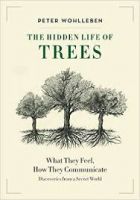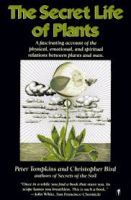The Hidden Life of Trees
 As reported in The New York Times, Peter Wohlleben’s book, a surprise hit titled “The Hidden Life of Trees: What They Feel, How They Communicate – Discoveries From a Secret World,” has verified what many nature enthusiasts, and virtually all native peoples have believed for years: that plants, in this case trees, have feelings too.
As reported in The New York Times, Peter Wohlleben’s book, a surprise hit titled “The Hidden Life of Trees: What They Feel, How They Communicate – Discoveries From a Secret World,” has verified what many nature enthusiasts, and virtually all native peoples have believed for years: that plants, in this case trees, have feelings too.
Since the publication in 1973 of “The Secret Life of Plants,” by Peter Tompkins, enormous research has shown that plants hear, feel, and communicate in a variety of ways.
From the NYT article, we read, “Presenting scientific research and his own observations in highly anthropomorphic terms, the matter-of-fact Mr. Wohlleben has delighted readers and talk-show audiences alike with the news – long known to biologists – that trees in the forest are social beings. They can count, learn and remember; nurse sick neighbors; warn each other of danger by sending electrical signals across a fungal network known as the “Wood Wide Web”; and, for reasons unknown, keep the ancient stumps of long-felled companions alive for centuries by feeding them a sugar solution through their roots.”
Study after study has shown that plants are social beings, capable of feeling stress or pain, and that they are capable of communicating with their fellow neighbors. They vibrate, they shy away from painful phenomena, and they release chemicals that warn their network of predators. Plants have been shown to favor their “young” or offspring, and to “hunt” for food.

 Watch the documentary “The Secret Life of Plants”
Watch the documentary “The Secret Life of Plants”